

We obsess over every detail to make driving better. Find out how to get out on the road.
View ModelsFor Emergency Class A and Class C Roadside Assistance: Please Call 888-214-3658 for Roadside Assistance during the first twelve months of a new coach’s ownership. Please Call 877-276-0619 for Customer Service or specific questions about your Roadside Assistance Benefits.
Learn MoreWe obsess over every detail to make driving better. Find out how to get out on the road.
View ModelsWhether you are looking to buy, checking your warranty, or needing a job, we look forward to helping you.
Contact Us!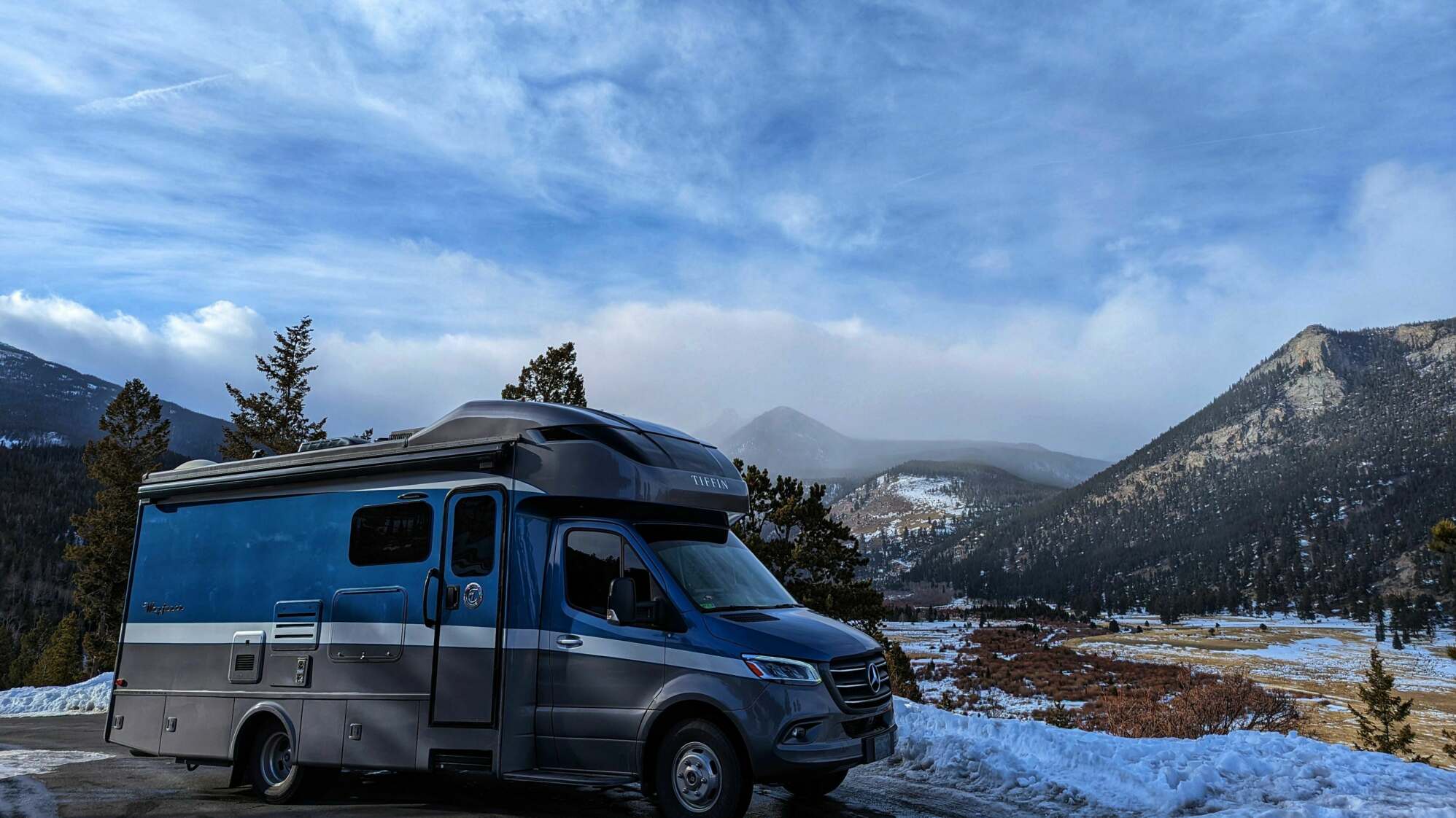
Dustin and Sarah are firm believers that the best adventures are found far off the beaten path. In June 2020, they purchased a Tiffin Wayfarer Class C in an effort to extend their adventuring and enjoy the outdoors for longer periods of time. They like to spend their free time biking, hiking and packrafting, all while making new friends and memories along the way.
While many RVers plan their travels around the warmer, summer season, there is still a lot of fun to be had when the weather cools down. Here we share a few tips on how to get your RV prepped for its destination, especially if you’re thinking of going somewhere cold. Traveling this way may require a few extra steps and some added safety precautions, but it’s a great way to help extend your RV camping season beyond the busy summer season.
Disclaimer: Please check with a dealer or your specific manufacturer to determine if your RV is built to withstand colder temperatures, and if there is any specific preparation you need to do based on the specific RV that you own.
Know before you go. This is the most critical step before setting out on any RV adventure, but especially during the winter. Research the weather forecast and historical temperatures in the area, check road conditions and look out for any closures, double check any specific vehicle requirements including four-wheel drive or tire chains, and always know how to access roadside assistance if needed. Even destinations in warm places can close their roads for various reasons. One time on a roadtrip through California, we had to backtrack for hours due to a closed mountain pass. Mudslides, fallen trees, unexpected storms, even roadwork can all impact how and when you’ll reach your destination. Above all, your safety should always come first. Before you leave, make sure to do a full maintenance check. Colder temperatures can really impact things like your tires and pipes.
Bonus Tip: Check out the U.S. Department of Transportation’s website for updated road conditions by state.
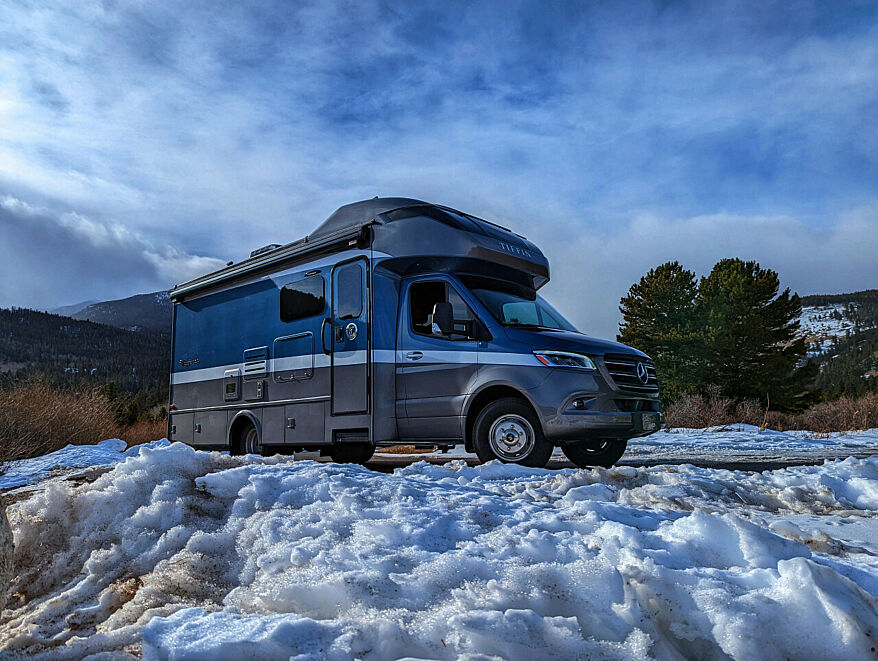
If you’re set on taking your RV to a winter destination, be sure and consult your owner’s manual. Not all RVs are created equal when it comes to “off-season” travel. For example, a four-season RV may come with tank heaters, a heated underbelly, wrapped water lines, double pane windows, and higher R-value insulation ratings, while a three-season RV may only have one or two of these features. If you do have an RV that’s deemed four-season or all-season, take some time to educate yourself on how to properly operate all of the features. And keep in mind that even those deemed four-season have temperature limitations. It’s helpful to know how to turn on additional heaters, the limits they are rated for and how to utilize them safely. Just remember that there is not a one-size-fits-all approach when it comes to RVs, so be sure and contact your dealer to understand any cold weather limitations or requirements for your specific RV.
Regardless if you’re taking your RV somewhere warm or cold, evaluating your insulation before you go is a good way to control your interior temperature and save on energy usage. Double check all the window and door seals, and look for any cracks or tears. Be sure and inspect your wheel wells and storage areas too, as small holes and cracks can let unwanted air inside. A quick and easy way to help regulate the temperature inside your RV is to add window insulation. We purchased double reflective foil insulation sheets and cut them to the size of our windows. We also added magnets for easy, snap-in installation. You can also add shrink-wrap insulation or heavy black-out curtains. We also suggest adding a thin layer of insulation board inside any cabinet walls. While this may take up a little storage space, it can help keep the entire RV warmer.
Bonus Tip: For additional cozy comfort, try adding some thick rugs or carpet strips to the floor of your RV.
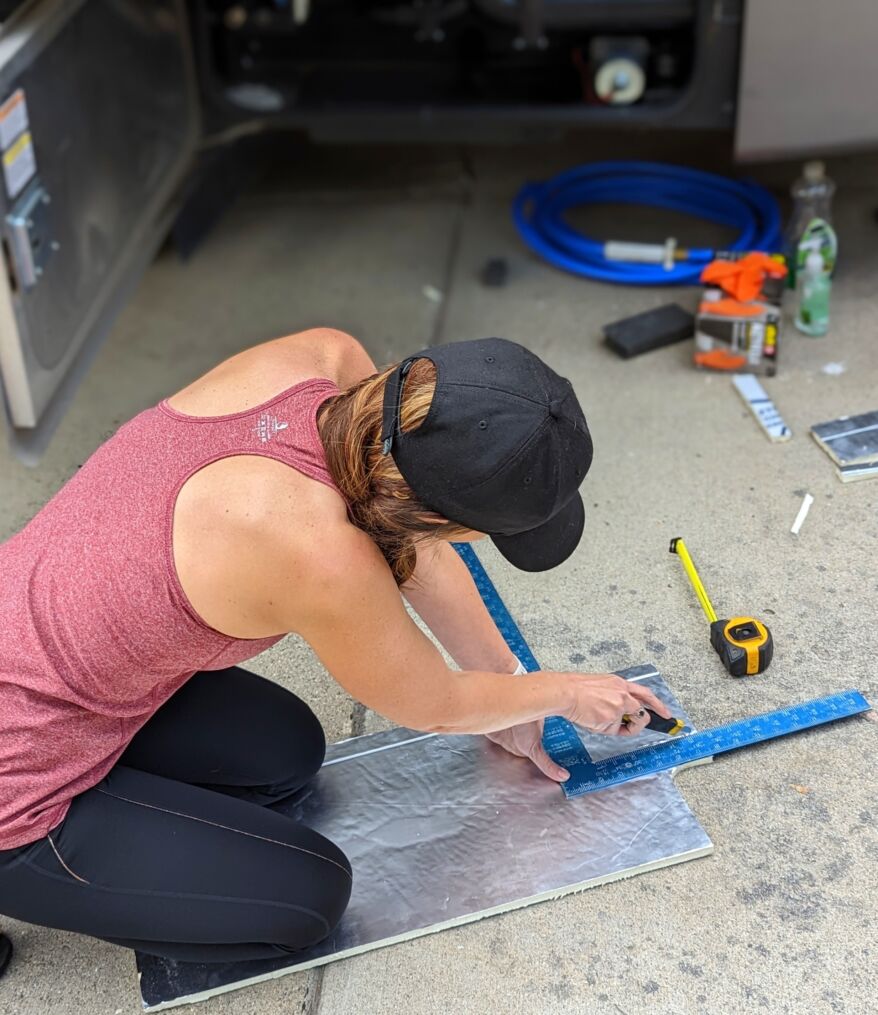
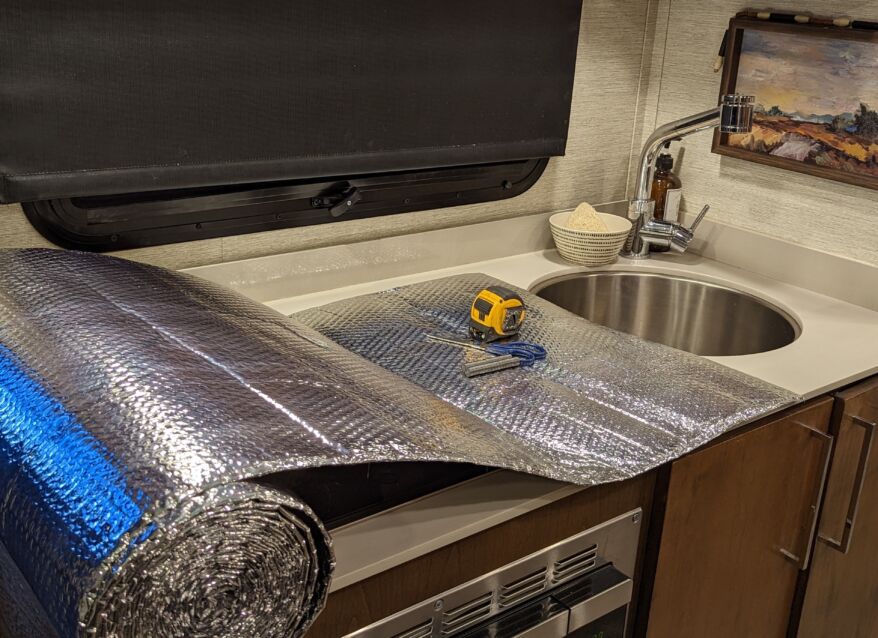
After insulation, it’s time to move on to your heat source. In our RV, we have two types of furnaces: one that uses electricity (heat pump) and one that runs on propane. We keep both in good working condition by regularly cleaning them, making sure the vents are open and clear of debris, and checking the pipes and ducts for any signs of damage. When cleaning and inspecting your heat sources, don’t forget to inspect any exterior venting, as these are popular places for critters to hide. Our electric heat pump works best when it is above 40 degrees, so we always keep an eye on our propane levels to ensure we have enough in case we need to switch over. You may want to consider bringing a small space heater if you’re going somewhere cold and your destination offers full hook-ups. We have found that having a space heater helps reduce our furnace usage and provides some extra, direct warmth. Look for space heaters that can be thermostatically controlled, have a tip-over switch that automatically turns the heat off if it gets knocked over, and an auto-off feature so you don’t accidentally leave it on for hours on end. For safety reasons, we recommend only using a space heater while you are physically in the RV.
Bonus Tip: Make sure your carbon monoxide and smoke detectors are working properly before you turn on the furnace. Pack some extra batteries just in case they stop working while on the road.
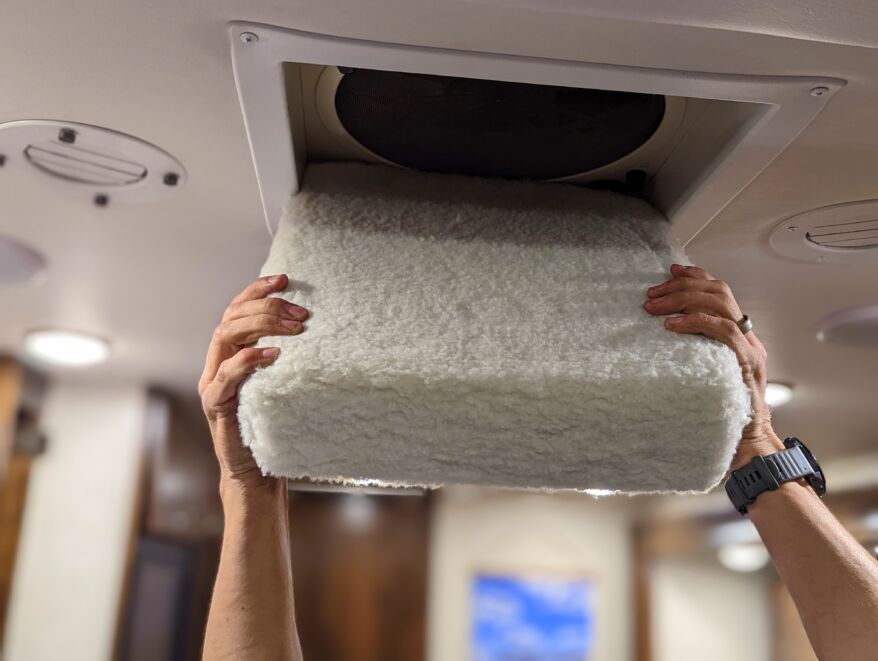
Another thing to keep in mind are your solar panels. Your destination may be heavily shaded, cloudy or simply have less sunlight hours if you’re traveling during the winter months, all of which can limit your solar power. If your RV doesn’t have a generator to charge your batteries and run your furnace, you may want to rethink where to camp and focus on places that offer full hook-ups.
Even if you’re not planning to travel somewhere where there is snow or freezing weather, sudden storms and cold fronts can dramatically drop temperatures, leaving your tanks and pipes at risk of freezing. One option is to fully winterize your three holding tanks before you leave, and then simply use public restrooms and bring large containers of fresh water. If this option isn’t for you and you want to focus on pipe and tank heaters instead, we suggest asking a local professional to help install these on your RV. Even if your RV already has heaters, we still recommend keeping your black and gray tanks less than half full and adding some non-toxic antifreeze to both tanks. You should also keep any values shut when you’re not using them and try to avoid keeping lines connected to water or sewer when you’re not actively filling or dumping. A heated water hose is another great option to help protect against freezing.
Bonus Tip: Keep any under-sink cabinets open to allow warm air to circulate around the pipes.
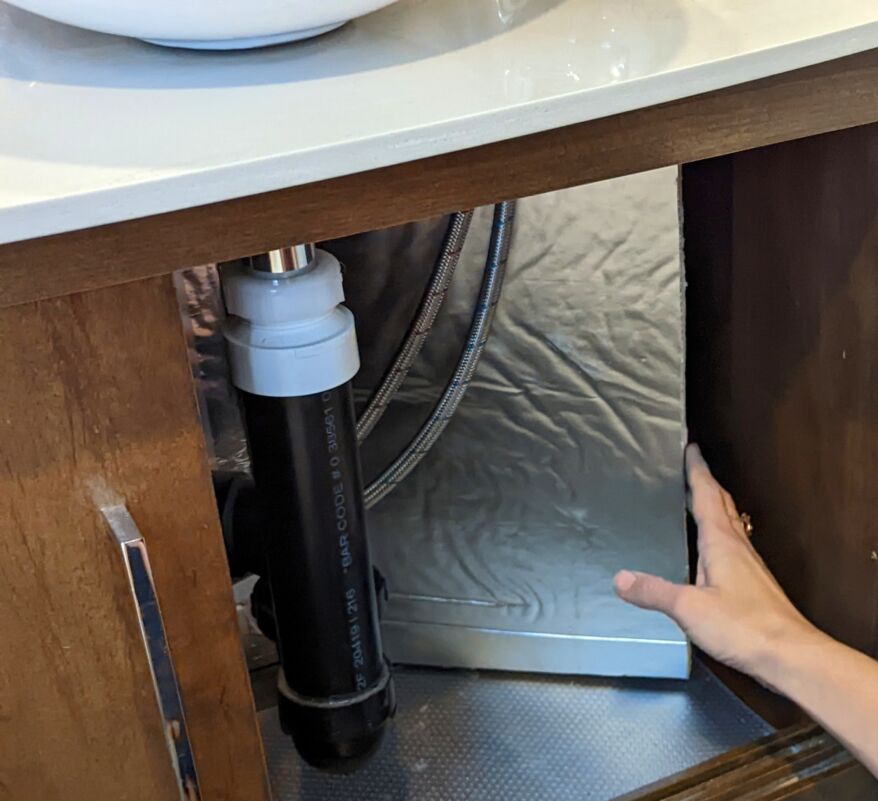
As we mentioned, temperatures can change rather quickly, especially when traveling during the shoulder seasons. In addition to frozen pipes, your landing gears and stabilizers can also freeze to the ground. To help prevent this, bring some wooden blocks to place in between your stabilizers and the ground. Another useful tool to have on hand is a shovel. This can help you create a more level spot, get rid of debris and clear a path in the snow.
It’s a good idea to pack a few extra items in case the weather changes or something unexpected happens and you have to stay put for longer than expected. Whenever we travel to a colder climate, we like to bring extra down coats, gloves, beanies, thick socks, sub zero sleeping bags, and hiking heat packs. There is a chance your power or propane may go out, and this could occur in the middle of the night or in a remote location, so you’ll want to be prepared. Some other essential packing items include headlamps, matches or a lighter, extra water, duct tape, and a first-aid kit (preferably one with an emergency thermal blanket).
We have taken numerous RV trips in all different temperatures and climates. One of the greatest joys of RVing is that you can travel almost anywhere and experience popular places during shoulder and off-seasons. However, it’s important to always know your limitations and be extra careful when planning these types of trips. You may have to plan and pack more, but feeling safe and prepared should always be your number one priority.
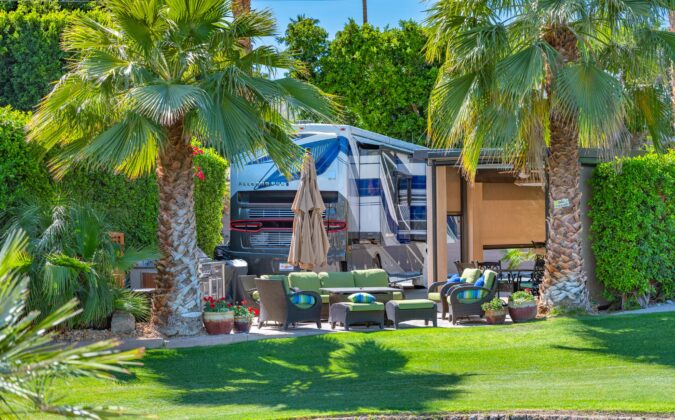
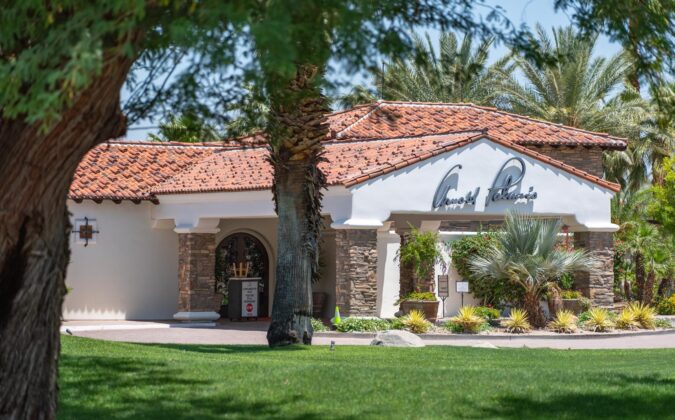

With Thanksgiving right around the corner, cooking with your convection microwave oven can seem daunting at first. But never fear! Follow our helpful tips, and you'll be an RV cooking master in no time.